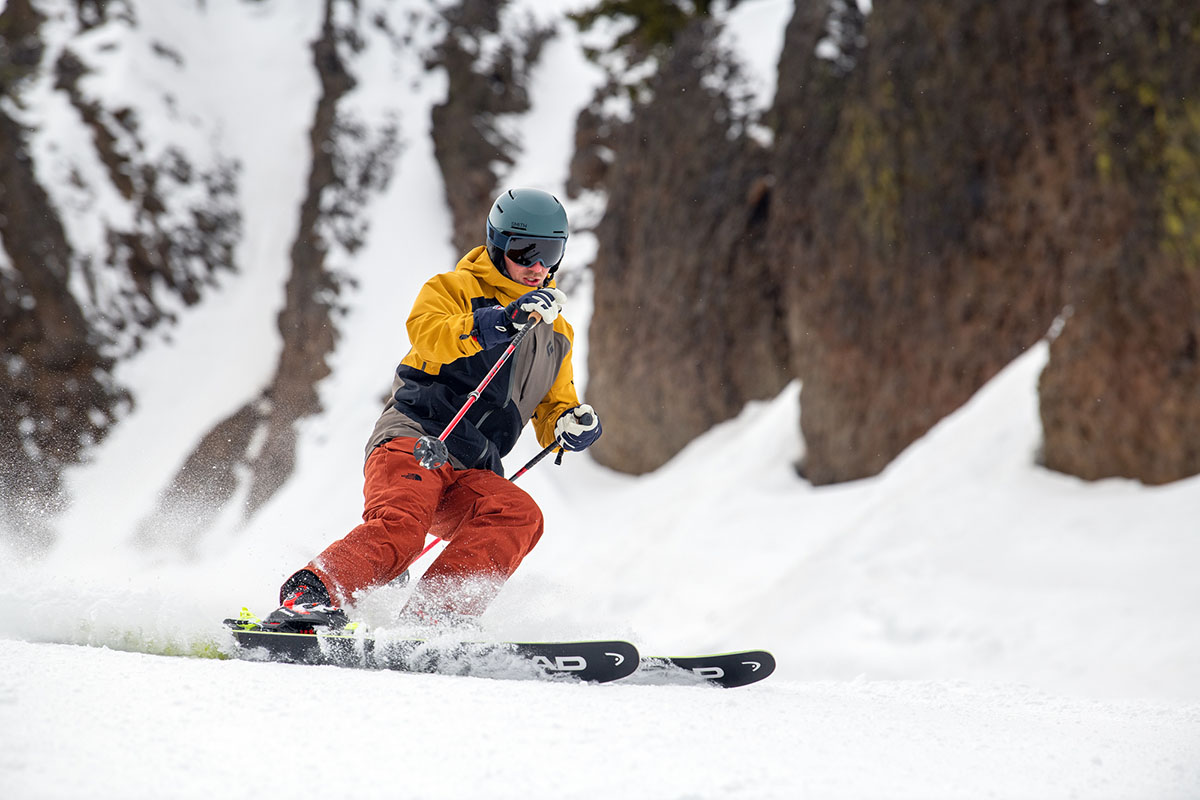
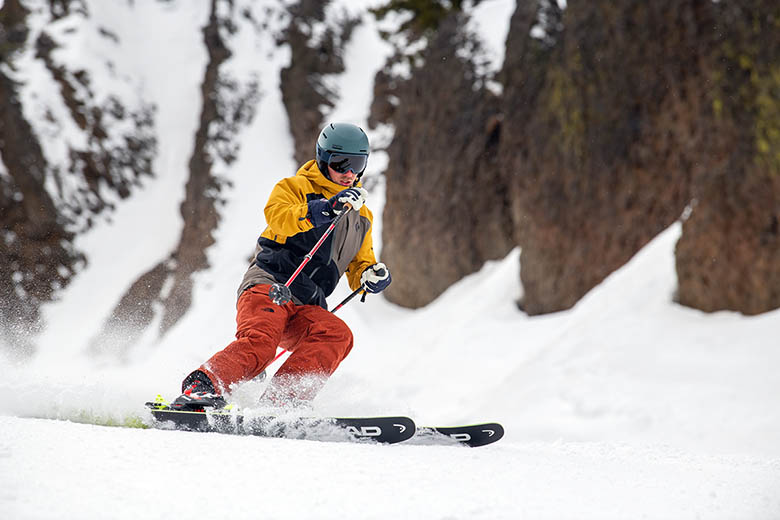
Price: $749
Ability level: Advanced to expert
Dimensions: 133-93-115mm (177cm)
What we like: Smoother and more versatile than the prior generation yet light and agile.
What we don’t: Still not a leader in top-speed stability and dampness.
See the Head Kore 93
The original Kore ski was a market standout thanks to its progressive, superlight all-mountain design, and Head went back to the drawing board last season for the second edition. Key changes included a revised core construction, even lighter weight, and—importantly—a smaller gap between available lengths (now 7cm). All in all, the updates produced strong results: Whereas we felt the prior model was light but lacking in personality, the latest 93 is a fantastic all-rounder. It still rewards aggressive pilots with power and responsiveness but now has a nice dose of playfulness both on and off trail, as well as in the bumps. Below we break down our experiences with the Kore 93. To see how it stacks up to the competition, see our articles on the best all-mountain skis and best intermediate skis.
Editor’s note: We tested the 2021-2022 version of the Kore 93, and the ski was lightly updated for this season with new graphics and a revised matte-finish topsheet that’s intended to boost long-term durability. We’ve noted these changes where applicable in the review below.
As a daily driver for skiers who like to do a little of everything, Head’s Kore 93 is one of our current favorites. The ski is very light and easy to flick around—unlike the prior generation, it’s something even a strong intermediate will find manageable—yet there’s still a healthy dose of stiffness that allows it to hold a solid edge. That mixture of quickness and strength was expected, but I was particularly happy with how much pop the ski had coming out of turns. It seems the revised construction, which now features two layers of carbon along with a karuba/poplar wood core and less overall mass, has increased both its fun factor and versatility.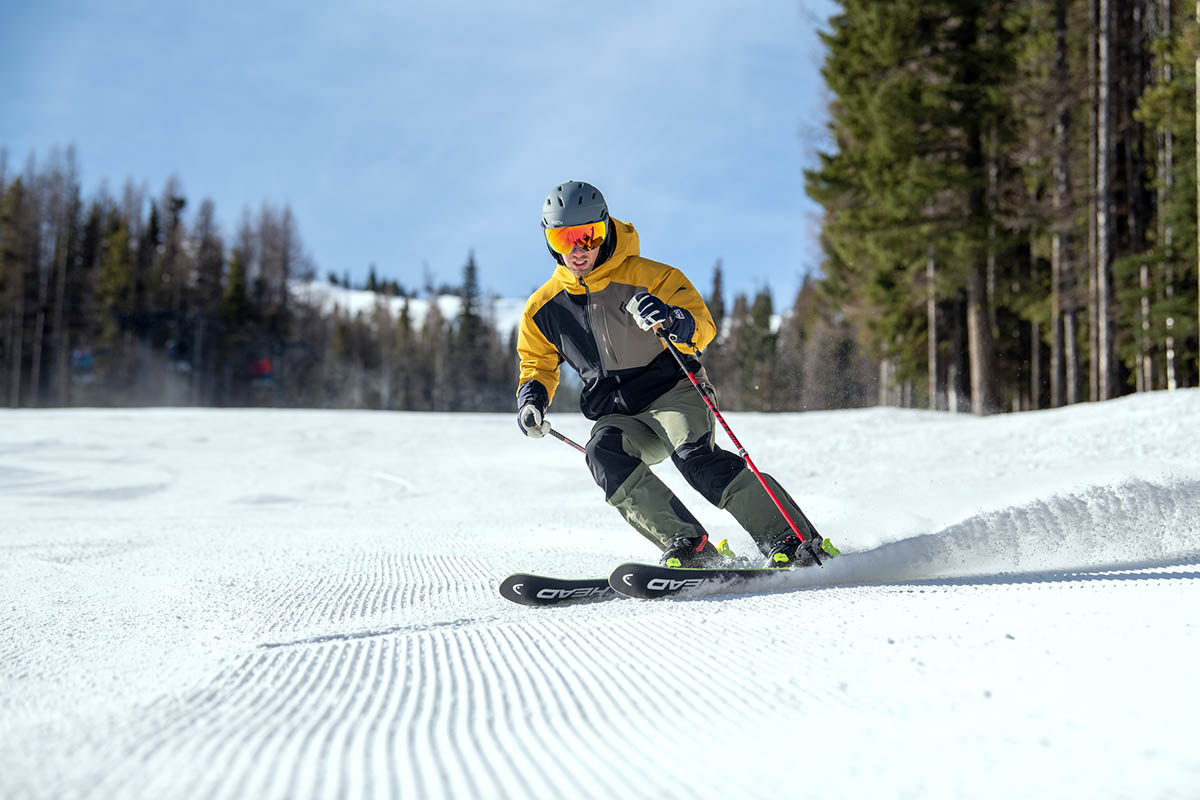
One downside to the Kore’s light build is that it can’t match the all-out stability and dampness of a heavier design. Despite being packed with high-end materials like carbon fiber and Graphene in the tip and tail, I found the front end was a little more prone to getting bounced around in chopped-up snow and at top speed than an alternative like Nordica’s Enforcer 94. And while the Kore holds an edge nicely when laying over into a wide turn, again, it’s a small step down in overall grip.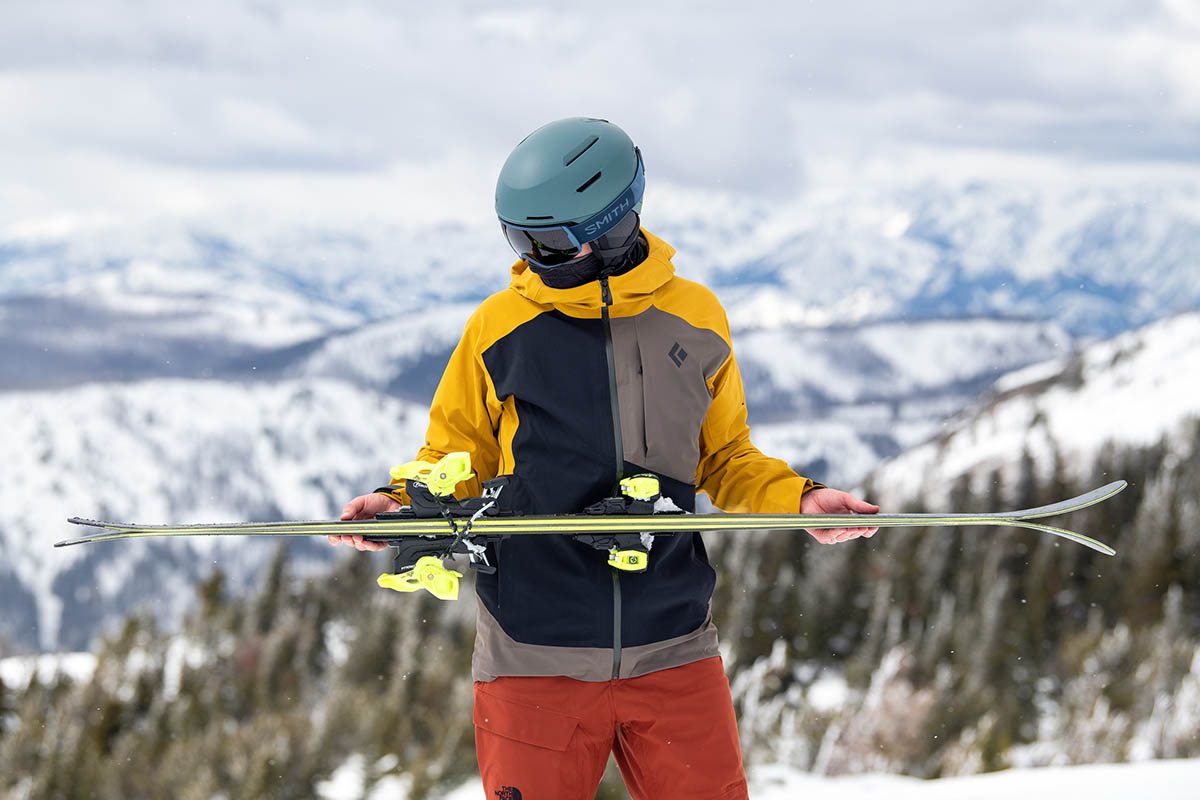
That said, the tradeoff is that the ski responds immediately to inputs: I loved medium-width turns on the Kore (its 16.4m radius in the 177cm model confirms this feeling), and it felt flickable and in control in just about all snow conditions. Finally, the weight savings and approachable build make it far less fatiguing than a heavy, overly stiff and demanding ski like Salomon's Stance 96. Taken together, the Kore 93 struck me as a nice update to an already great design, and we expect the lightly updated 2022-2023 model to be similarly popular all over the mountain.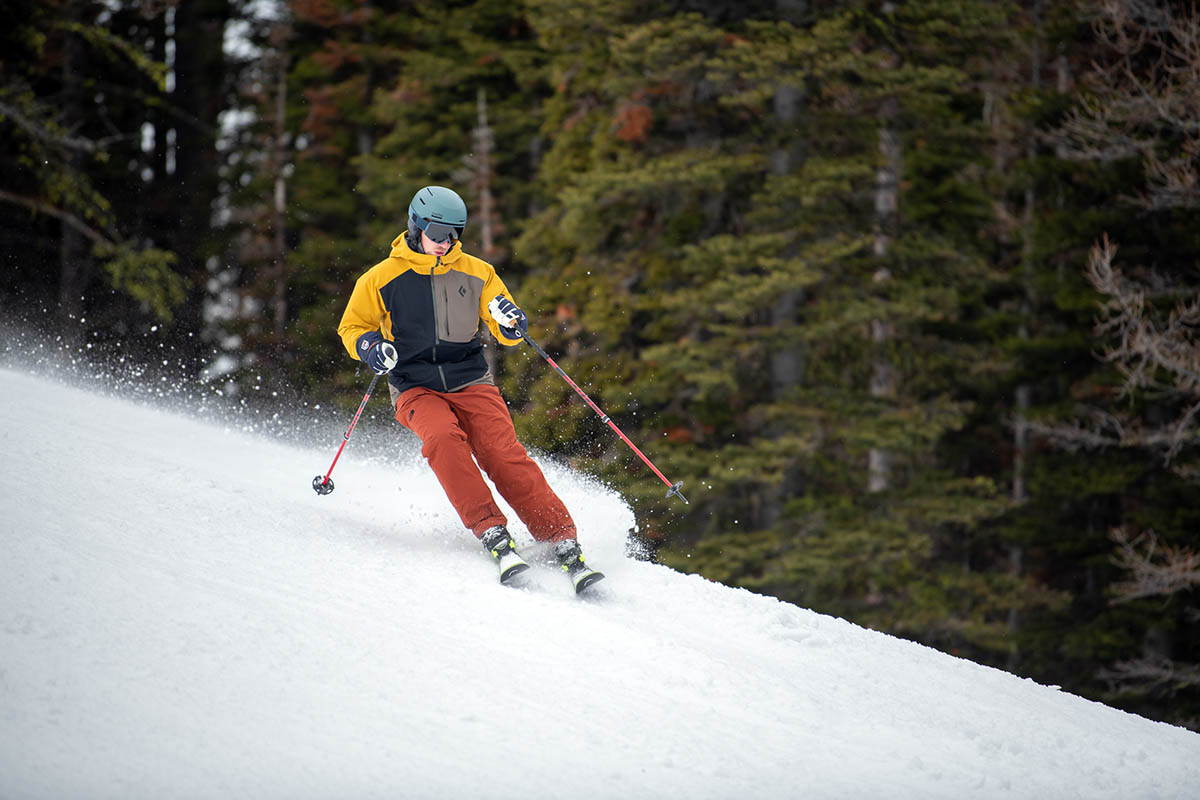
As expected for the width, the Kore 93 prefers hardpack and light powder days over deep conditions. It was a fantastic match when a late-season storm left about 4 inches of fresh snow over a solid base in my local hill’s sidecountry. The ski has just enough tip and tail rocker to make it a smooth off-trail operator, and the combination of super low weight and stiffness also make it easy to vary the width of my turn depending on conditions. In an open bowl, I had the confidence to let the Kore rip, but it was equally rewarding picking my way through tighter chutes and at slow speeds. The ski also pivots nicely and responds well to strong inputs, but it’s not going to punish you too much if you get in the back seat for a short stretch. Understandably, swapping to the wider Kore 99 increased the float and all-around fun factor in deeper powder stashes (and that model remains quick and flickable), but I was overall happy with the 93’s off-piste performance.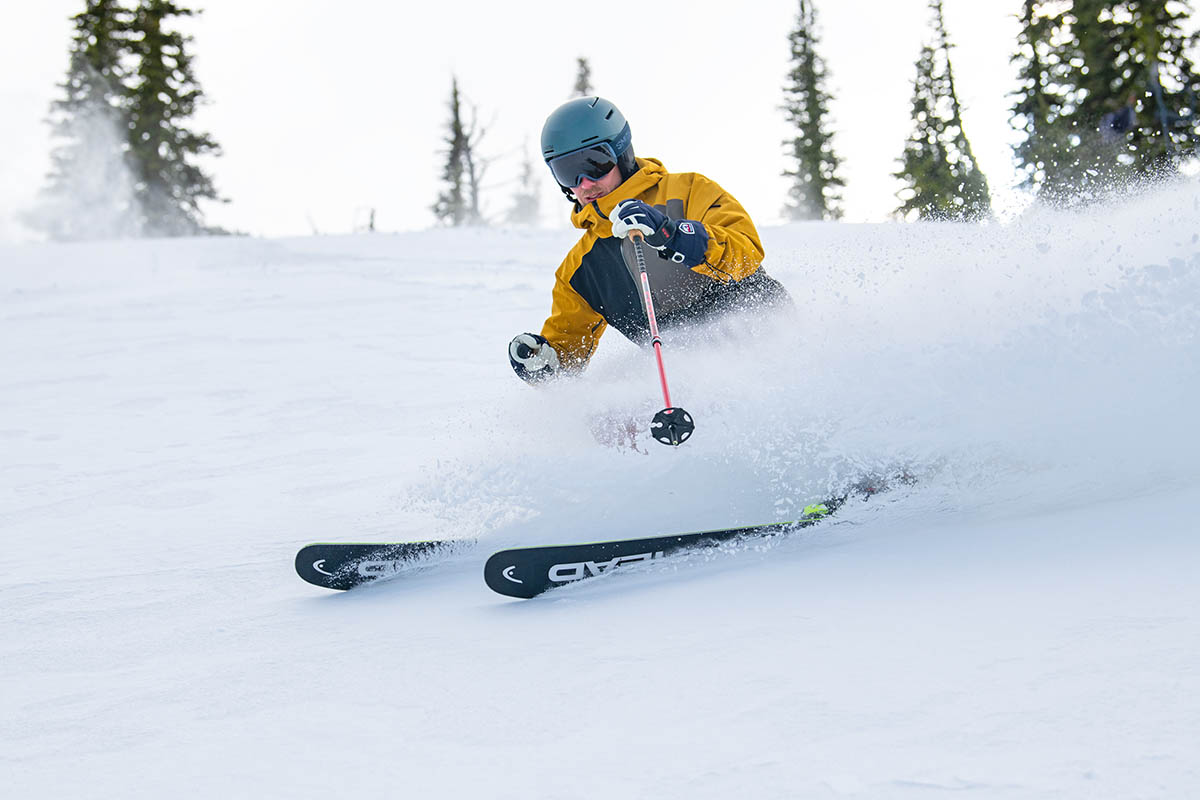
Another benefit to the latest Kore’s lighter yet slightly more forgiving build is apparent in the bumps. Namely, there’s a lot of pop from the stiff construction, and its moderately short turn radius (16.4m for my 177cm length) and nimble overall feel encourage quick and snappy movement. If you’re a mogul specialist and prefer more shock absorption, a damper design like Blizzard’s Rustler 9 or Salomon’s QST may win out for you. But among stiff and strong all-mountain models, the Kore 93 is a perfectly viable option for the occasional zipper line.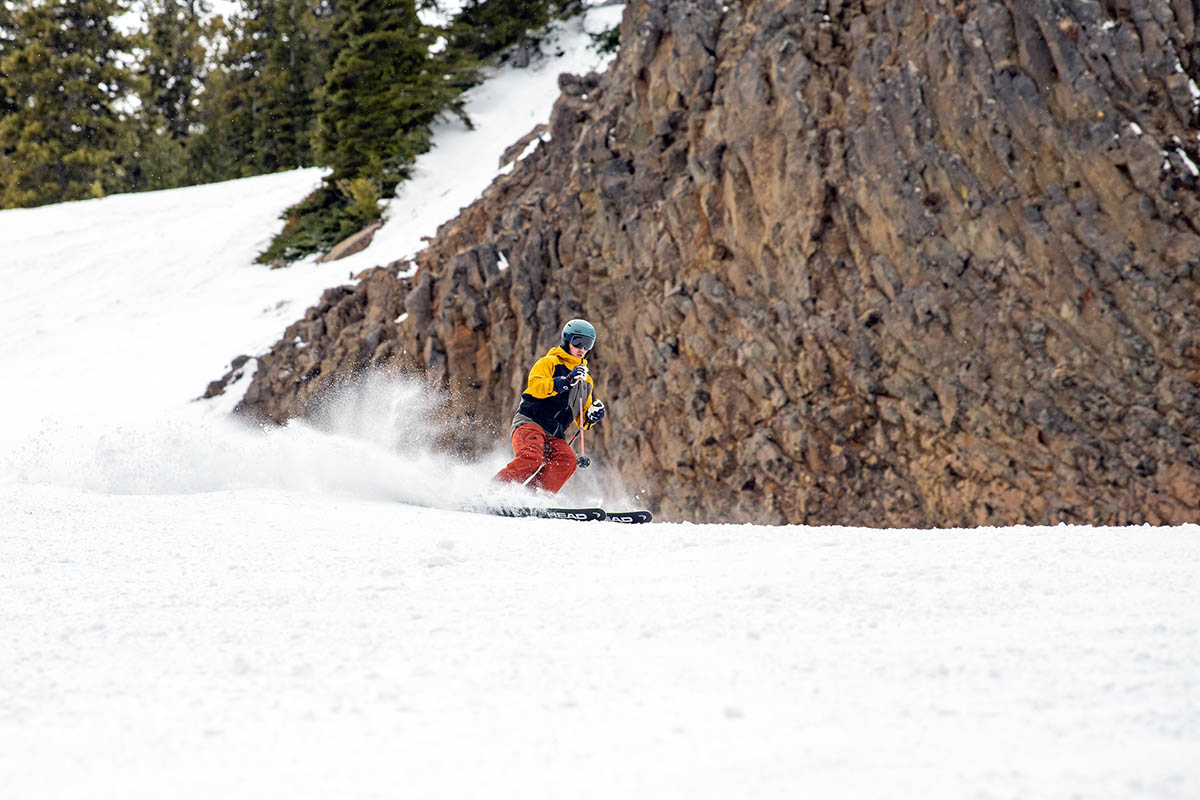
High-end materials and construction have never been an issue with the Kore, but one complaint that Head addressed with the 2022 iteration that we tested is in regard to durability. Specifically, the prior model was prone to showing premature wear, particularly along the sides where the thin, polyester fleece topsheet would occasionally chip. That said, by rounding off the top (the term here is “chamfer”), Head reduced the risk of chipping while also saving weight and mass. The thin topsheet itself still strikes me as more likely to show scrapes and scratches than a traditional design, but that’s more of a cosmetic complaint. And importantly, Head lightly revised the topsheet for the latest 2022-2023 version with a more traditional matte finish for better long-term durability.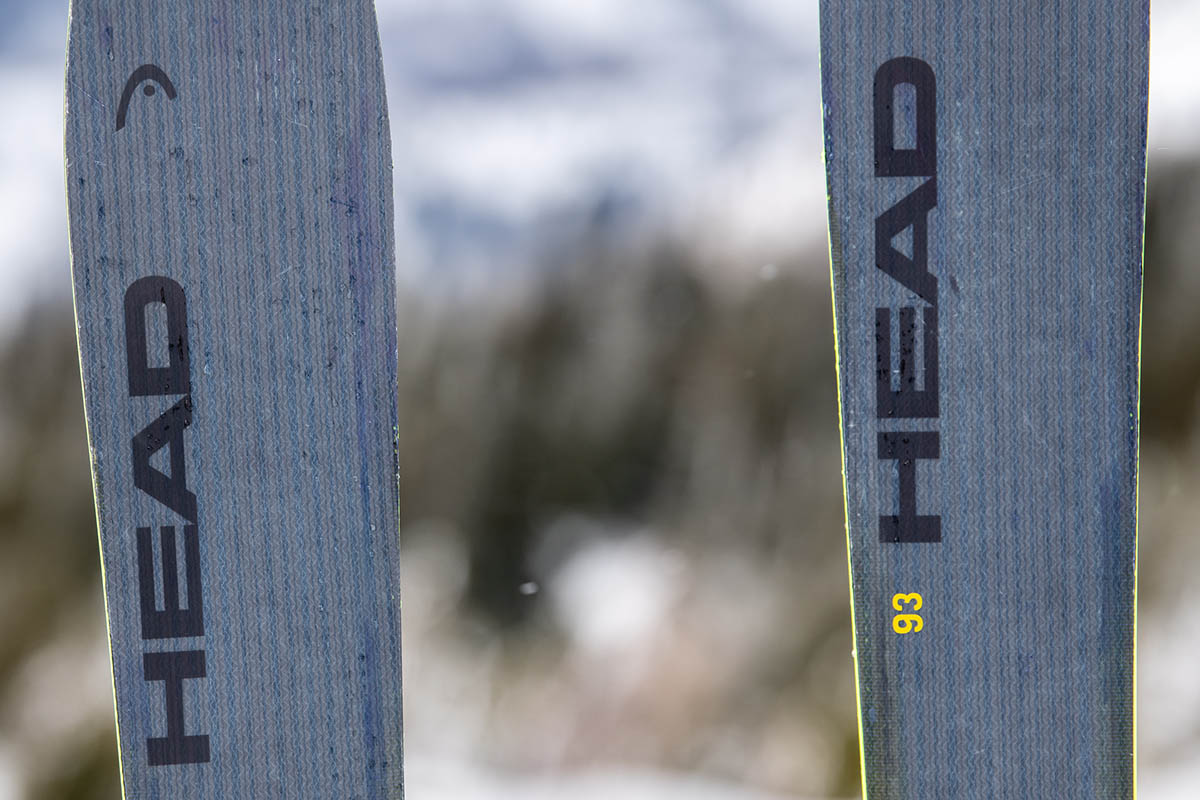
As I mentioned above, one of the big shifts with the 2021-2022 Kore model was an increase in the number of available sizes. With only 7 centimeters separating the lengths (which range from 156 to 191cm), it’s now far easier to get an ideal match. At 5’9” and 155 pounds, I went with the 177-centimeter length, which is my typical sweet spot for an all-rounder. All in all, I found it felt true to size and had a very natural feel from the very first run. Of note: Each length has a unique turn radius that gets longer as ski length increases. And given the tighter gaps between sizes, you can tune your turning style (quick/medium-width vs. longer sweepers) to the length a bit better.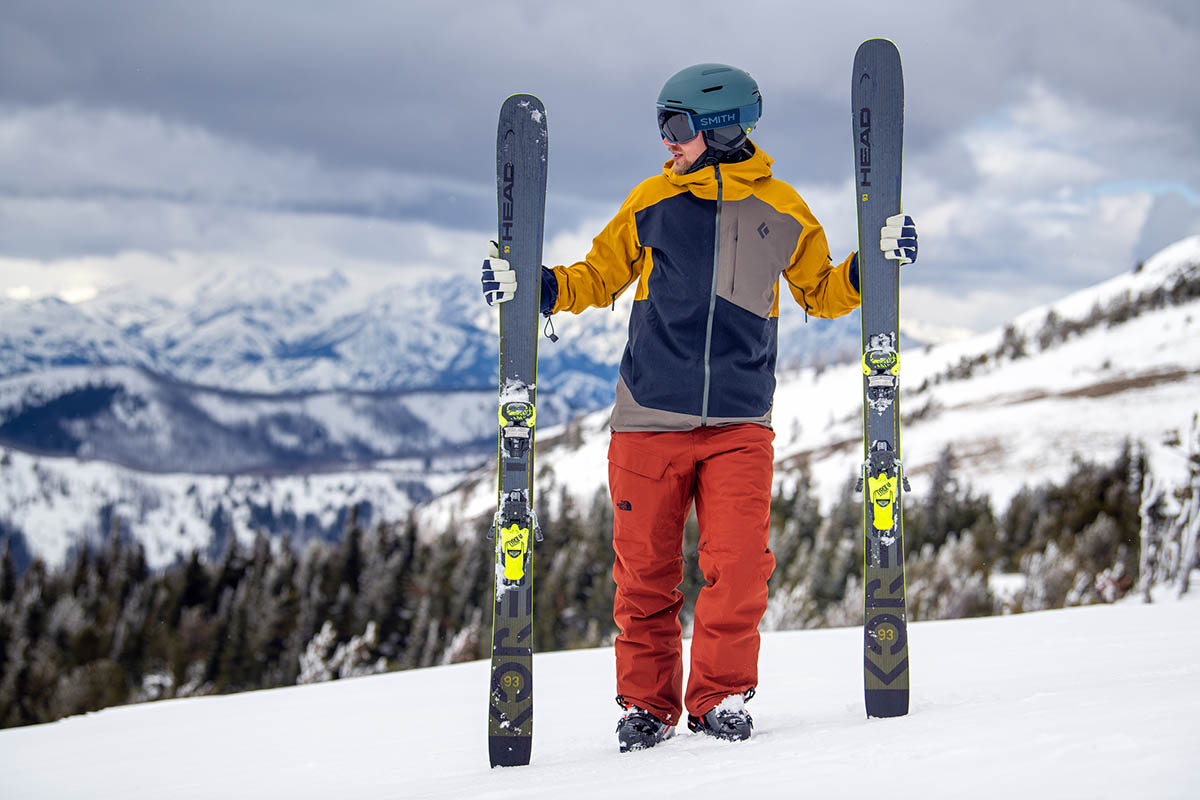
We think the Kore 93 tested here has the most widespread appeal in the all-mountain category, but Head’s Kore collection includes a number of other widths ranging from 87 all the way up to 117 millimeters (and 85 to 103mm on the women’s side). For powder hounds and those who spend a lot of time in the backcountry, the 105, 111, and 117 variations are worth considering. And as I mentioned above, swapping to the 99 would also increase float in deeper conditions while retaining good quickness and flickability (for more, see our in-depth Kore 99 review). Finally, for resort skiers that live in areas with firmer and icier conditions (like the East Coast of the U.S.), stepping down to the 87-millimeter Kore could be a viable option.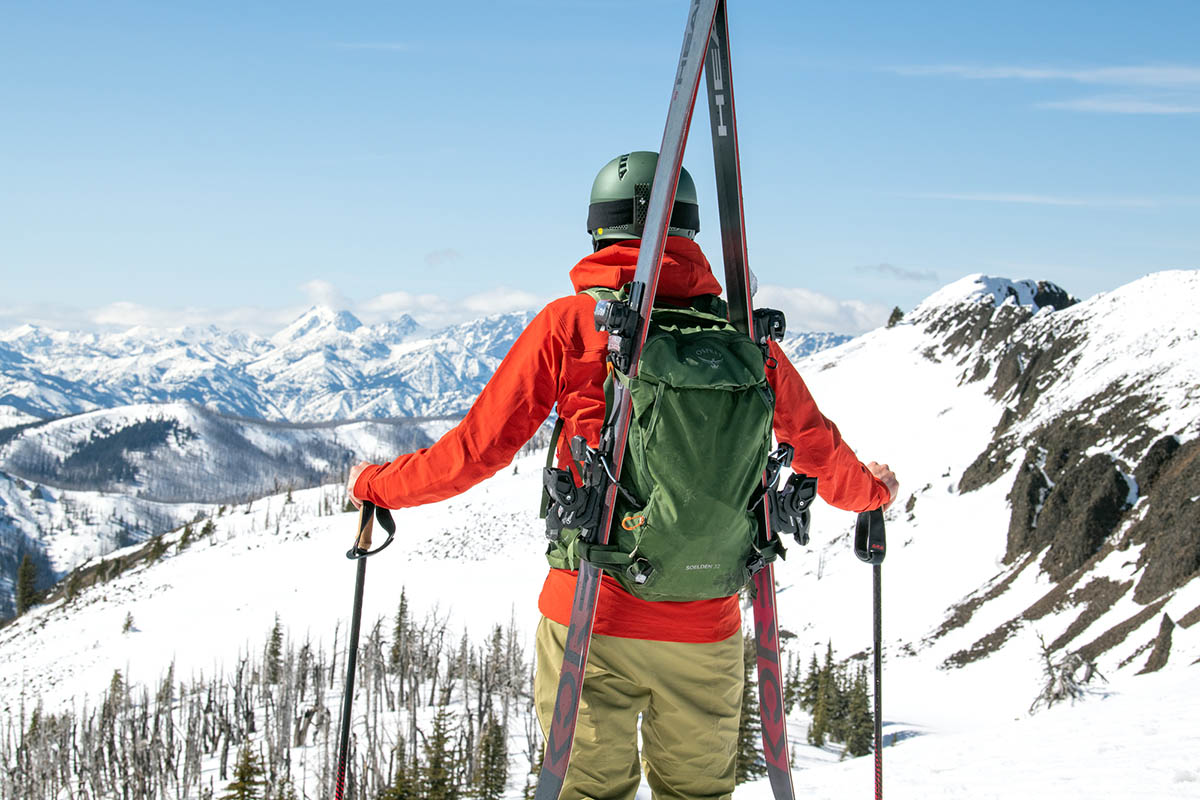
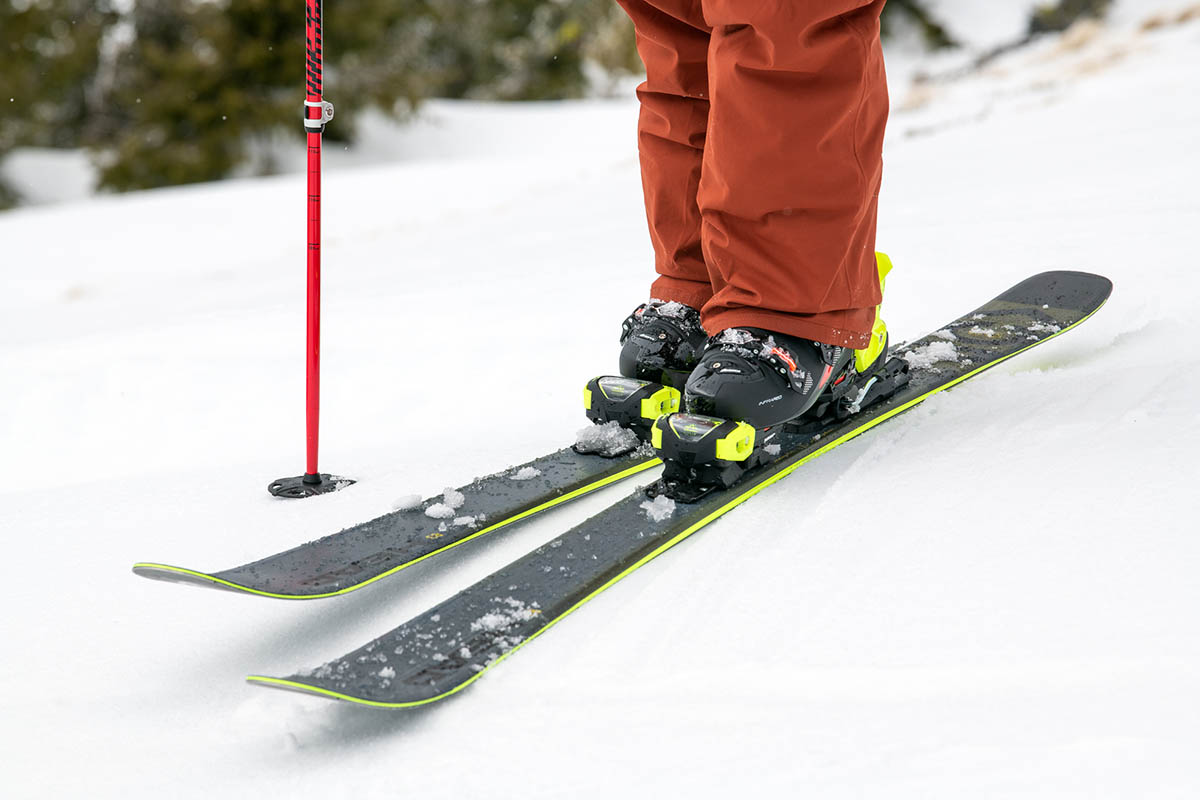
| Ski | Price | Ability Level | Dimensions | Radius | Construction |
|---|---|---|---|---|---|
| Head Kore 93 | $749 | Advanced to expert | 133-93-115mm | 16.4m | Wood, Graphene, carbon |
| Nordica Enforcer 94 | $750 | Intermediate to expert | 127-94-115.5mm | 17.1m | Wood, Titanal, carbon |
| Volkl M6 Mantra | $750 | Advanced to expert | 135-96-119mm | 30/18/24m | Wood, Titanal, carbon |
| Blizzard Bonafide 97 | $750 | Advanced to expert | 136.5-97-118.5mm | 17m | Wood, Titanal, carbon |
| Salomon Stance 96 | $700 | Advanced to expert | 132-96-114mm | 20m | Wood, Titanal, carbon, flax |
| Atomic Maverick 95 TI | $700 | Advanced to expert | 129-94.5-113mm | 19.3m | Wood, Titanal |
Head’s Kore 93 is one of our favorite all-mountain skis for its well-balanced build that nicely combines a low weight and playful personality with good power and responsiveness. Nordica’s Enforcer 94 is another crowd favorite and is our current top-rated ski. Where the Nordica stands out is its natural feel: It’s damp yet fast, easy to get along with, and a versatile all-rounder in the 94-millimeter width. Compared with the Kore, you do lose a little of the agility and quickness, but the tradeoff is a bit more control and speed (and its tip is less prone to bouncing around in crud). Both are standout designs, and the gap between them has narrowed with this latest, slightly more forgiving Kore model. However, unless the weight difference is important for you (the Kore is certainly better if you plan to throw on a pair of backcountry bindings), the Enforcer gets the small advantage as our all-mountain choice.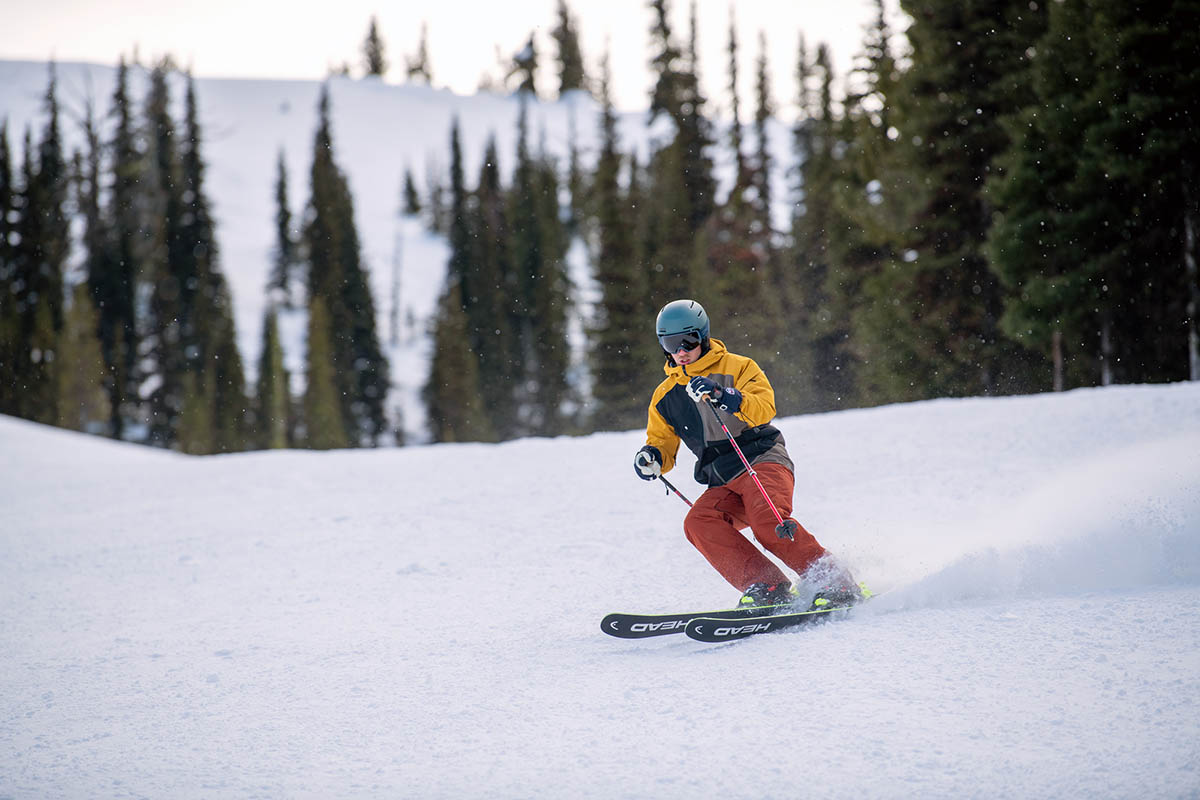
Like the Kore, Volkl released a new variation of their legendary Mantra series last winter called the M6. Much like the prior model, the design still rips on groomers, with a heavier and damper build and better edge-holding capabilities than the Kore. The flip side is that the Volkl isn’t as flickable or fast in tight spaces (although to be fair, not many stiff, all-mountain skis are). And interestingly, despite being wider at the waist (96mm), the added mass translates to a bit less versatility and fun in soft snow. As a result, we consider the M6 a hard charger for serious skiers and will outperform almost everything in its class at top speed (even in challenging conditions), while the Kore is a little more well-rounded and less demanding.
Next up is Blizzard’s Bonafide 97, which is fast and powerful on hardpack but still performs well in mixed conditions. Compared to the Kore, you get an extra 4 millimeters of width at the waist, which translates to a very planted and damp ride. This should satisfy most speed enthusiasts, but the Blizzard also impressed us with its manners off trail, where it was pretty smooth in powder and easier to control than expected. That said, the Bonafide can’t pivot on a dime like the Kore (both on and off piste). In essence, we consider it a slightly more versatile M6. And as with the Mantra, if weight is a top consideration for you, it’s best to steer clear.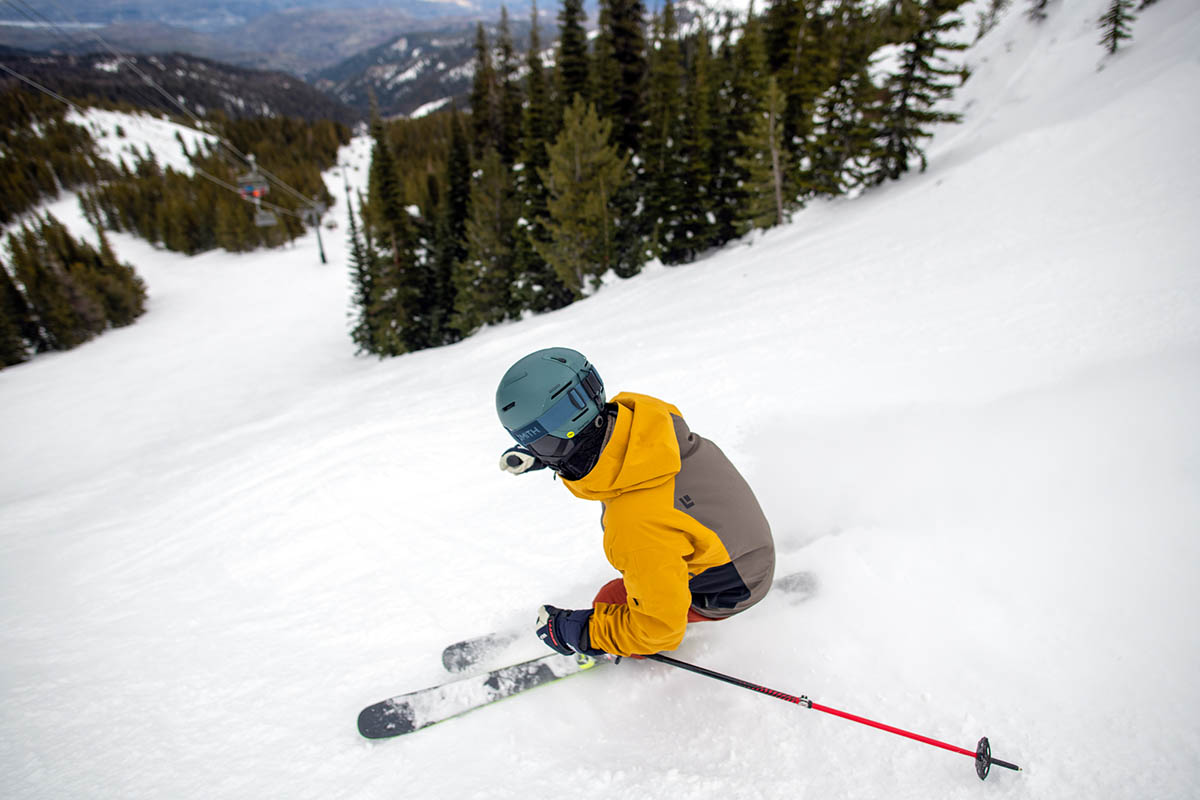
Salomon’s stiff and powerful offering is their Stance 96. In testing the Stance, we liked its sturdy feel from the mostly metal construction, and it plows confidently through choppy snow. Stacked up against the Kore, the Salomon is faster and prefers smooth, sweeping turns (it has a fairly wide, 20m turn radius) but is less playful and lacks some of the fun factor of the Head, especially when venturing off piste. It’s also pretty unforgiving (it’s best suited for advanced to expert riders) and far less flickable and easy to control in tight spaces. All told, the Stance is an undeniably enticing option for dedicated hard chargers, but the Kore delivers much more all-mountain versatility for just $49 more.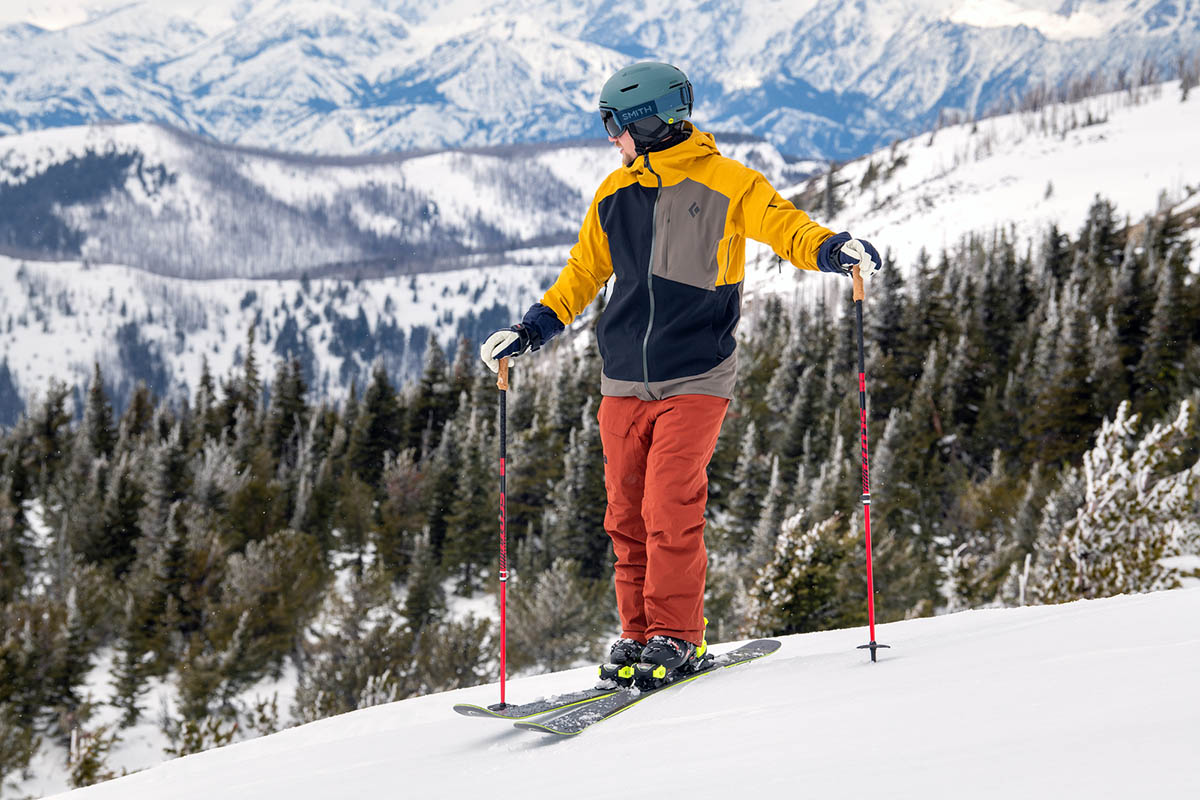
Last but not least is Atomic’s Maverick 95 TI, which slots in as a replacement for the discontinued Vantage line. One big change is that the latest iteration a bit softer at the front end of the ski, and it’s also light—not as light as the Kore, but still a pretty nimble and flickable design. As expected, neither model stands out in crud or especially bad conditions, and you don’t get the same level of outright stability at top speed as you do with alternatives like the previously mentioned Stance 96 or M6 Mantra. Where the two differ most is that flex pattern: The stiffer front end of the Kore will likely satisfy more powerful skiers, while the Maverick will be a little more playful and forgiving (it’ll be a bit better in the bumps, too).